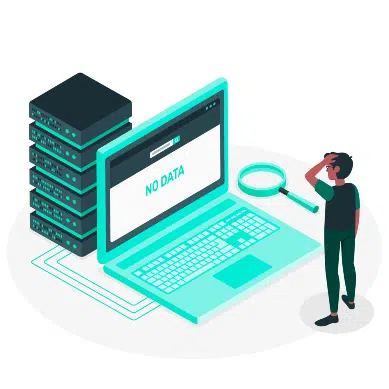Mergers and acquisitions (M&A) are intended to boost the value of your brand or business when you find an opportunity to combine the capabilities of your organization with another.
To that end, executives responsible for M&A should always ensure that the firm in question is a safe and reliable investment.
While you always check for financial stability and future revenue potential already, have you also looked at an increasingly important factor like cyber risk exposure or legal and regulatory exposure?
In this blog, we’ll cover the basics of M&A cybersecurity, including cybersecurity due diligence best practices in this area.

The Growing Issue of Cybersecurity
You don’t have to look far to know that modern businesses are embracing digital tools and online services more than ever thanks to their efficiency and accessibility benefits.
At the same time, they’re also opening up a potential issue with security. And as new trends like the Internet of Things and remote work are becoming more popular, cyber threats themselves are going up in complexity and frequency.
A firm might run into data breaches and cyberattacks from a variety of sources, including compromised credentials, social engineering and employee human error. Taking the right approach is about both adopting software tools and services as well as putting proper policies in place for staff to understand the risks.
Companies that fail to keep up run the risk of suffering data breaches, malware attacks, and other new problems that can compromise their bottom lines and the trust they have amongst business partners and customers. From the perspective of an M&A officer, you want to do your M&A cybersecurity due diligence. Here are a few tips to follow to ensure you can best leverage privacy best practices to minimize risk during any deals you make:
- Use the pre-purchase process to verify that a potential investment is a strong company that hasn’t been exposed to a past data breach. This is exactly what Marriott International experienced when they purchased breached assets from Starwood.
- Ensure that a subsidiary cannot expose the parent company to cyber risks through the M&A process.
- Map out potential regulatory penalties, industry cyber threats, and general cyber risks that could impact the business
- Leverage integrated risk assessments and automated smart questionnaires to gain a real-time snapshot into what a company’s cyber risk posture and overall GRC looks like.
Start Getting Value With
Centraleyes for Free
See for yourself how the Centraleyes platform exceeds anything an old GRC
system does and eliminates the need for manual processes and spreadsheets
to give you immediate value and run a full risk assessment in less than 30 days
Understanding Cybersecurity M&A Due Diligence
Having due diligence is all about recognizing digital risks and responding to them accordingly. In other words, you are taking a proactive approach to find holes in your defenses before they can become exploits.
But it extends beyond your own borders—due diligence must extend to all the third-party relationships you have with your partners. Only then can you use those best practices to achieve compliance with government regulations and minimize your attack surface.
A few things you want to know about M&A cyber risks are:
- Risk varies by industry, so it’s essential to use the right frameworks to track industry-specific risks. Use the right frameworks to properly measure risk.
- Ensure that you have a vendor risk management program in place to determine risk exposure across your portfolio of investments, vendors, and partners.
- Do you work with multiple vendors? Leverage the right risk management tools to collect and measure risk across each of these vendors.
- Data is meaningless without the right tools to organize and transform it. Ensure your organization has a robust reporting tool in place to generate actionable insights for both technical and business-level audiences
- Risk evolves over time as trends change, new threats emerge, and industries grow in popularity. Using an all-in-one risk management tool lets you create data benchmarks that can streamline the due diligence process.
When it comes to mergers and acquisitions, making sure that every party involved has a strong security posture goes a long way to making better, more fruitful deals that won’t result in costly damage control later. The process also gives you a benchmark on which to base future investments.
How To Get the Most Out of M&A Cyber Risk Due Diligence
What are the usual policies and best practices for ensuring digital safety in your mergers and acquisitions? Some general tips to keep in mind are the following.
Ask the Right Questions
A cybersecurity due diligence questionnaire is a vital step towards understanding the way a company approaches online safety. Ask the businesses you will be potentially working with the following essential cybersecurity questions.
- What are the business assets that a cyber-attack and incident can harm? Set up a list with all the business elements that are important and need to be fully functional in order to continue running your business.
- Could you prioritize the list by the impact level of an attack for your business? Does one element enable all the other parts of the company? Critical assets can be a single point of failure, and defending them will be a top priority for the business.
- What are the business processes that go beyond internal activities? These could include online activity, third-party vendors, data exchange, and any other non-internal environment. Categorizing business assets to relevant business processes will help determine the relevant attack surface and the actual threat actor for each of them.
- Does your business have to possess sensitive records? This could include PII/PHI/PFI/PCI. And if it does, would you be able to map each one of the business processes with these records?
- Why do you have these sensitive records? Think about the purpose of these business processes, why you have this data, and how you store it.
- Could you build a business unit list based on the business assets? This could be an organization, online activity, sensitive information storage, IT department, or sensitive geo-location sites.
- Would you be able to identify the threats for each of the critical business units? What would be the risk scenario, the impact, and the probability of a cyber attack accruing?
It’s important to conduct a risk assessment for each of the business assets. This means identifying the threat vulnerability, impact, and probability that indicates the risk scenarios. You should also calculate the projected inherent risk, set up the list of security controls that should be in place in order to mitigate the threat, and reduce the risk level to acceptable residual risk.
Know Where the Sensitive Data Is
You can’t have strong defenses if you don’t know what you’re defending. Take time to create a data inventory or data map to show what type of sensitive information a business has and where it lies. This map will give you a sense as to what type of risks you will be facing during the merger.
Even after the acquisition finishes, you can still use the data map to check on security of data when it’s in transit (i.e. during data transfers when the company communicates with yours).
Planning Out the Acquisition or Merger
When two organizations combine, the integration strategy matters immensely when the deal closes so that cybersecurity gaps don’t inadvertently arise. Two networks coming together can easily create unnoticed gaps in security, hence why cybercriminals often target merging companies especially.
You would often have a chief information security officer (CISO) handle the integration work between two joining businesses, but you can otherwise use a professional service for the job.
Be Wary of the Challenges
Getting cybersecurity due diligence right is all about preparation, ongoing effort, and the right best practices. It’s not an easy task, and some of the common pitfalls of the process related to M&A include:
- Not enough communication: Digital security should be a two-way street between you and the other business. Ensure that you receive support from your target company, such as explanations on security policies and documentation. If the business does not offer these options to you, then it might be a sign that you should look for better deals.
- Lack of information: The firm you’re working with must have records of past data breaches and other cybersecurity incidents to explain to you. If there isn’t enough documented evidence or the firm has a strict confidentiality agreement, you may need to add some meetings to your schedule to receive an explanation.
- Legal compliance: This factor largely depends on the industry and nature of the business you’re talking with. Take time to understand the specific legal requirements regarding online security for each firm in your portfolio.
- Dependencies: What if you’re just acquiring a portion of another organization? In that case, don’t forget to check for additional risks associated with parent companies and dependencies on other departments.
- Willingness to use technology: Due diligence isn’t going to be any easier with threats constantly evolving every day. Staying competitive is all about adopting the right tools and technologies to stay on top of today’s most pressing threats.
This last point is becoming more vital than ever as enterprise-grade security solutions are becoming more accessible to even smaller companies.
Use Tools To Your Advantage
Ever heard of a cyber risk management platform? These automated solutions allow a third-party service provider to act as your auditor, compliance specialist, and data analyzer amongst other jobs.
Risk management has become a market in and of itself. Whether you’re checking for internal risks or vendor risks with third-parties, an automated solution is the most scalable approach you can choose today.
Conducting Cybersecurity Due Diligence: A Quick Rundown
Just to review, let’s go over the essential steps and activities for checking on the security posture of a business you’re planning to merge with or acquire.
- Determining the risk: A firm must acquire information regarding its security landscape, including its current projects, infrastructure, applicable regulations, and even social media postings.
- Two-way communication: Be able to discuss in detail regarding these areas of cyber insurance. What technologies do you use? How do you control third-party security for partnerships? How do you adhere to data privacy laws?
- Threat reports: A business must be able to perform external scans for critical information on the open web. Threat reports are an excellent way to create an external perspective on your security posture.
- Risk profiles: As an M&A executive, it’s your job to build risk profiles using the information from this process for each business you might work with in the future. Highlight the key risks and the actions taken to mitigate them. Would the resulting security setup be sufficient for creating value in your agreements, and are there any critical risks that must be addressed before a final decision can be made?
An optional step would be penetration testing. While not traditionally part of due diligence, it can still be a useful practice for checking on web-facing applications and infrastructure and building a risk profile.
Achieve M&A Cybersecurity Due Diligence Best Practices With Centraleyes
It’s no secret that M&A becomes that much easier when you have access to all the data you need in one place—a true real-time snapshot into what a company’s governance, risk, and compliance looks like.
Centraleyes is an automated risk management platform that simplifies all aspects of due diligence in the M&A process. Private equity firms rely on our platform to gain real-time visibility into GRC.
Are you looking to reduce your exposure to risk when it comes to evaluating a company’s GRC? Book a demo today and see why Centraleyes is the go-to platform for automated risk management.
Start Getting Value With
Centraleyes for Free
See for yourself how the Centraleyes platform exceeds anything an old GRC
system does and eliminates the need for manual processes and spreadsheets
to give you immediate value and run a full risk assessment in less than 30 days





